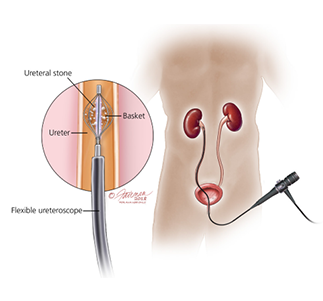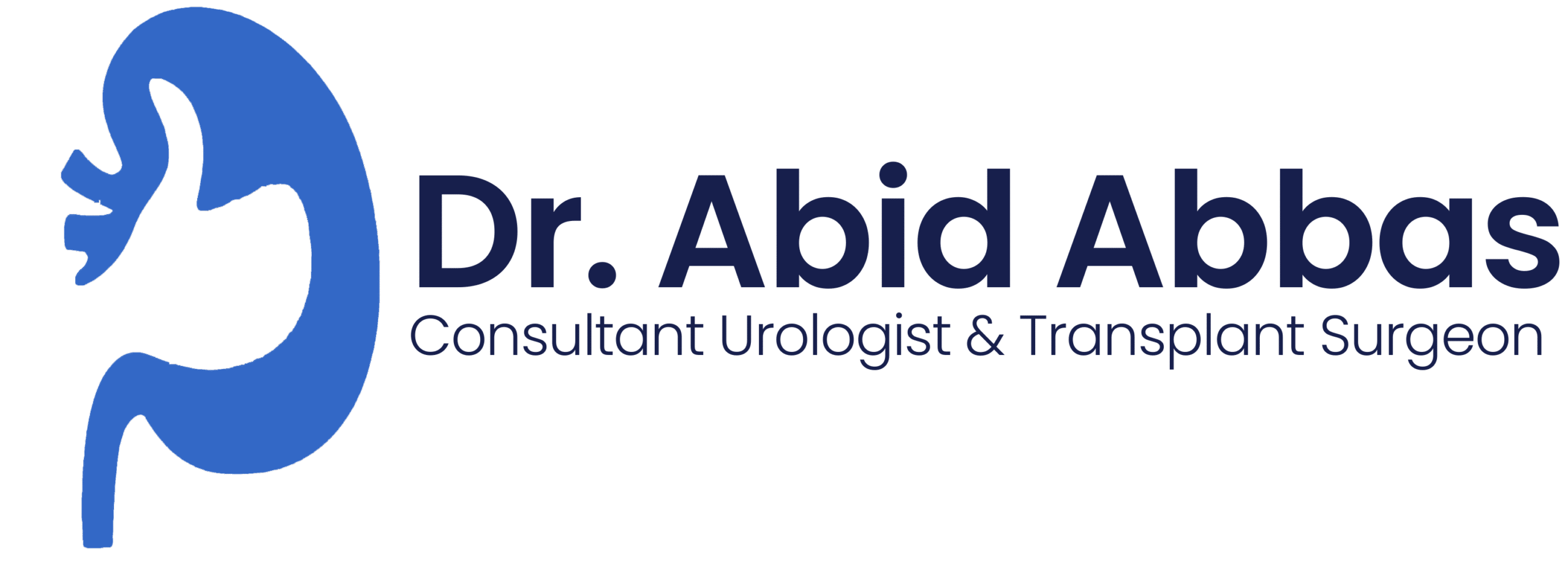URS Patient Guide
Ureteroscopy (URS) is used to treat stones in the kidney and ureter. URS involves passing a very small telescope, called an ureteroscope, into the bladder, up the ureter and into the kidney. Rigid telescopes are used for stones in the lower part of the ureter near the bladder. Flexible telescopes are used to treat stones in the upper ureter and kidney. The ureteroscope lets the urologist see the stone without making an incision (cut). General anesthesia keeps you at ease during the URS procedure. Once the urologist sees the stone with the ureteroscope, a small, basket-like device grabs smaller stones and removes them. If a stone is too large to remove in one piece, it can be broken into smaller pieces with a laser or other stone-breaking tools. Once the stone has been removed in whole or in pieces, your health care provider may place a temporary stent in the ureter. A stent is a tiny, rigid plastic tube that helps hold the ureter open so urine can drain from the kidney into the bladder. Unlike a bladder catheter or kidney drainage tube, this tube is within the body and does not need a bag to collect urine. You may go home the same day as the URS and can begin normal activities in 2 to 3 days.
- Economical Surgical Option
- Fast Recovery
- Minimal Hospital Stay
- Patient Satisfaction

Frequently asked questions
Here are few Frequently asked questions:
Part of preventing stones is finding out why you get them. Your health care provider will perform tests to find out what is causing your stones. After finding out why you get stones, your health
care provider may give you tips to help stop them from coming back. Some of the tests he or she may do are listed below.
Medical and dietary history
Your health care provider will ask questions about your personal and family medical history. He or she may ask:
• Have you had more than one kidney stone before?
• Has anyone in your family had stones?
• Do you have a medical condition that may increase your chance of having stones, like frequent diarrhea, gout or diabetes?
Knowing your eating habits is also helpful. You may be eating foods that are known to raise the risk of stone. You may also be eating too few foods that protect against stones or not drinking enough fluids.
Understanding your medical, family and dietary history helps your health care provider find out how likely you are to form more stones.
Diet Tips to Prevent Stones
Drink enough fluids each day.
If you are not making enough urine, your health care provider may suggest you drink at least 3 liters of liquid each day. This is about 3 quarts or about ten 10-ounce glasses. This is a great way to lower your risk of forming new stones. Try to drink more to replace fluids lost when you sweat from exercise or in hot weather.
Reduce the amount of salt in your diet. This tip is for people with high sodium intake and high urine calcium or cystine. Sodium can cause both urine calcium and cystine to be too high. Your health care provider may advise you to avoid foods that have a lot of salt.
Eat plenty of fruits and vegetables. Eating at least 5 servings of fruits and vegetables daily is recommended for all people who form kidney stones
Eat foods with low oxalate levels. This may be a good choice for patients with high urine oxalate. Eating calcium-rich foods with meals can often control the oxalate level in your urine.
Eat less meat. If you make cystine or calcium oxalate stones and your urine uric acid is high, your health care provider may tell you to eat less animal protein.
Eat the recommended amount of calcium.
If a stone in the ureter does not pass in a reasonable time or is causing pain or infection, you may need surgery to remove it.
Yes, but rarely. Kidney stones can cause damage if they cause repeated or serious infections. Or, they can damage kidneys if there is a blockage for a long time. Some stones, if left untreated, can cause the kidney to stop working.
